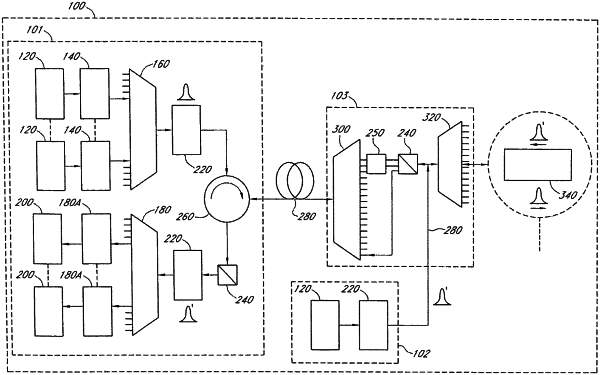| CPC H04Q 11/0067 (2013.01) [H01S 3/101 (2013.01); H04B 10/272 (2013.01); H04B 10/5161 (2013.01); H04J 14/0223 (2013.01); H04J 14/0256 (2013.01); H04J 14/0282 (2013.01); H04Q 11/0005 (2013.01); H01S 5/0265 (2013.01); H01S 5/06256 (2013.01); H01S 5/06258 (2013.01); H04Q 2011/0016 (2013.01); H04Q 2011/0032 (2013.01); H04Q 2011/0064 (2013.01)] | 45 Claims |

|
1. An intelligent subsystem is operable by a wireless network,
wherein the intelligent subsystem comprises:
(a) a microprocessor;
(b) a display that comprises one or more viewing windows;
wherein the display is foldable or stretchable,
(c) a first radio module;
wherein the first radio module comprises one or more first electronic components,
(d) a second radio module selected from the group consisting of a software as a radio module, an ultra-wideband module and a millimeter wave radio module; and
wherein (i) the software as the radio module comprises one or more second electronic components, (ii) the ultra-wideband module comprises one or more third electronic components, (iii) the millimeter wave radio module comprises one or more fourth electronic components,
(e) a user-specific security control interface or a user-specific authentication control interface,
wherein the microprocessor is coupled with (i) the display, (ii) the first radio module, (iii) the second radio module and (iv) the user-specific security control interface or the user-specific authentication control interface,
wherein the microprocessor is communicatively interfaced with:
(i) a first set of computer implementable instructions to provide learning or intelligence to the intelligent subsystem based on a user's interest or a user's preference; and
wherein the said first set of computer implementable instructions comprises artificial intelligence or an artificial neural network,
wherein the said first set of computer implementable instructions is stored in one or more non-transitory storage media,
(ii) a second set of computer implementable instructions to understand a voice command or an audio signal in a natural language,
wherein the said second set of computer implementable instructions is stored in the one or more non-transitory storage media.
|